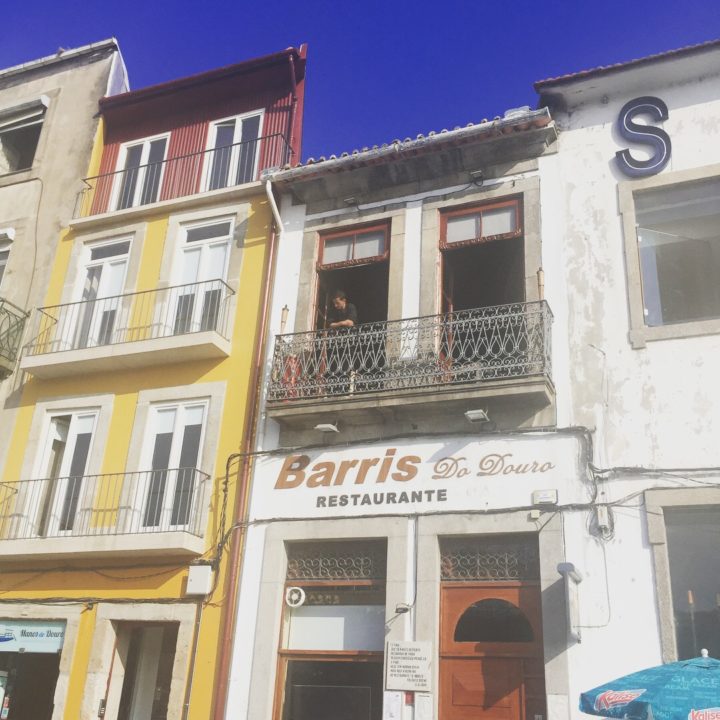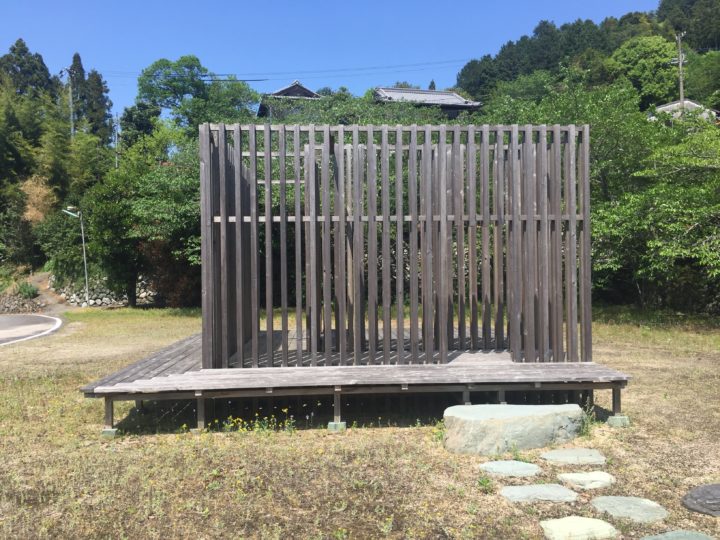Porto was illuminated by the sunlight that shone through the thick watery mist. Walking toward the city center from hotel where I was staying, I noticed that the street naturally went down like a slope, eventually directing me to the Douro river. The city of Porto, in northern Portugal, was constructed on a slope overlooking the rich waters of Douro. The more I walk up the slope, the closer I come to the sky.
Walking in the city, I noticed that some windows were wide open. Even if the window was closed, when the shutter was open, you could at least see through the glass to what was going on in the house, as the house’s façades stood at street level. It was nice to walk and see the continuation of colorfully patterned tiles decorating the walls. Most of the streets in town were made with stones, seemingly unchanged for more than 100 years. It was so narrow that only one person could comfortably walk, and you are obliged to squeeze close to each building’s façade.
So when a window was wide open at street level, you were tempted to look inside. In one house, a person was settled back in the sofa watching football match, the TV brightly lit in the dark, the tiny football on the field visible on the TV screen. The other house had the table placed beside the window covered by the red checkered tablecloths on which a vase with a flower was placed. There, an old couple was about to bring a spoonful of soup to their mouths.
There was intimate world through the window. Through a layer of glass, we see inside, but we cannot get in. I saw a few of these familiar landscape walking in town.

Window in Amsterdam 
Window in Porto
It was not just in Portugal that I had this view. Walking in Amsterdam, I noticed the window of one oblique apartment was wide open and I saw a man walking from right to left holding the coffee cup over the arched, surprisingly large window. Later, I heard that the apartments in Amsterdam were built narrow, since property was expensive, but that risked making it too dark inside, so windows were generally designed to be large to capture more light. This was how you could see people walking behind the window even from the street level, making passers-by feel like they were peeping inside the house.
The first impression of walking a new city disappears easily once you get used to the location. But later, after you leave that place, you think of something that you had never imagined when you were actually there. One day, I thought of talking about this to my friend Quynh, an American architect, as I don’t know anyone who travels more than she does.
‘Yes! It’s true,’ she said. ‘You see everything through windows in Europe – but you know, as people say, you are not supposed to look.’
It is funny to think that the European people tend not to look inside a window when it is wide open. I wonder if it is the unspoken rule of people who live in heavily populated place. Why do we need the wall when people are trying not to look at the wide-open private space?
Quynh travels all over, while working on her PhD, in order to continue, as she puts it, an ‘architecture quest’. She stayed in Japan for a while as artist in residence in three different places – Tokushima, Aomori and Kita-Kyushu – and traveled extensively to look at local architecture. Unlike other PhD students’ attitude of sitting and facing the bookshelves of academic reading, she set out on her quest, wanting to record her fresh and tactile feelings after looking at real buildings.
For her PhD, Quynh is looking at ‘in-between spaces,’ those spaces without a definite function like the kitchen, living room or bedroom, those that connect those functional spaces, or the area between inside and outside.
‘I was astonished when I came to Japan to see exactly the space that I was thinking about!’ she told me.
When I checked with her if she means the doma– the entrance space of a Japanese house – and engawa, the deck or corridor that spread from a room into a garden, Quynh repeatedly nodded: ‘Yes! Doma and engawa!’
Why had Quynh become so interested in ‘in-between spaces’? Born and raised in Virginia as a Vietnamese-American, she first came to Japan in her early 30s. In typical houses in Virginia, there is always a porch, a space to avoid direct sunlight and stop it entering the house. Yet, she said, that was not quite the same feeling as ‘in-between space,’ which was more sensual and abstract. A porch was perhaps too functional.
‘It takes years to build a building, meanwhile, people’s thought and life change,’ she said. ‘Then I wondered what would be the space that does not fit neither in architecture nor art? I asked myself how does this kind of space function in people’s lives?’
Quynh’s decided she would attempt to face this issue of space actively before accepting any projects from clients. She found one answer while working as an artist in residency in Kamiyama, Shikoku Island, in Japan, a small village of fewer than 6,000 residents. At the corner space of a car park near the village office, she built using thin square cedar logs an installation that consisted of a wall and floor. The entire structure was louvered so you can see through to the other side. Rocks were placed evenly in front of this installation, but there was no door to define the entrance. The corridor and open space were vaguely separated with louvered wall, but not quite, which made me think that the entire structure was made as an engawa.
The installation was neither ephemeral nor permanent. It seemed to me that this was the most appropriate way for Quynh to work, as she thinks about space as neither art nor architecture. This installation was built outdoors, but the presence of wall and floor made you feel as if you were inside the space. I noticed it as I was about to take off my shoes when entering. Almost two years since it was built, the timber of the structure had embraced time and was oxidized black.

I returned to thinking about the city of Portugal after discovering this notion of ‘in-between space’. I remembered the glamorous window displays that caught my eyes walking in the street. You would know what kind of products were sold without entering the space as you could see them neatly placed beside the entrance of every shop. The sausages were hung from the ceiling, projecting the gradation of thick red color in the butcher’s. The bread and cakes were neatly placed in the tray looking at us with different faces in the bakery’s glass showcase. The candies and chocolates were packed in their plastic packages and boxes and packed so tightly in the sweet shop that it looked like a colorfully pixelated image from a distance.
A window display is an ‘in-between space’ that connects outside and inside. If an engawa is a space in which to relax and look outside, window displays are the place for passers-by to look inside a shop without entering.
Today, you walk in the street like a sleepwalker looking at your mobile phone. You do not look at surroundings, but at the screen full of ideas of how you want to change yourself. When you look up from your phone, you see yourself and the building reflected in the glass. The moment you notice the same face and same ‘you’ as usual, the reflection disappears, and you see inside a window. What would you see at one glance in that tenth of a second? The window display is the intimate space of shop owners, or the pocket of town surrounded entirely by glass that emerges out of the blue in front of you.
